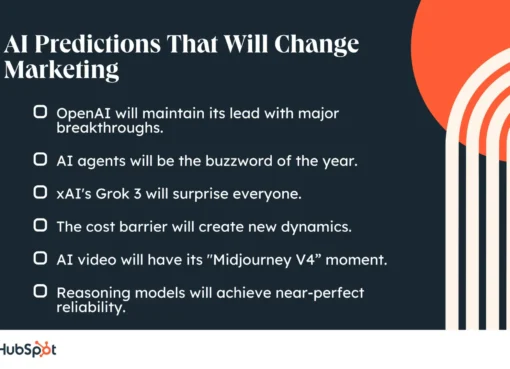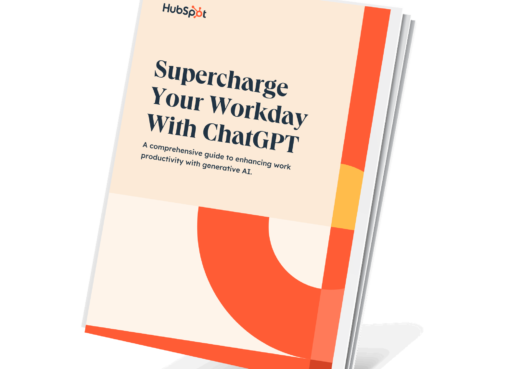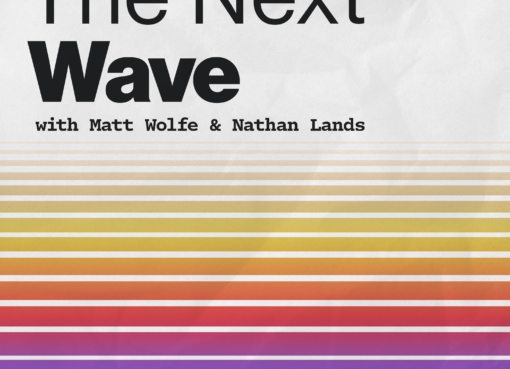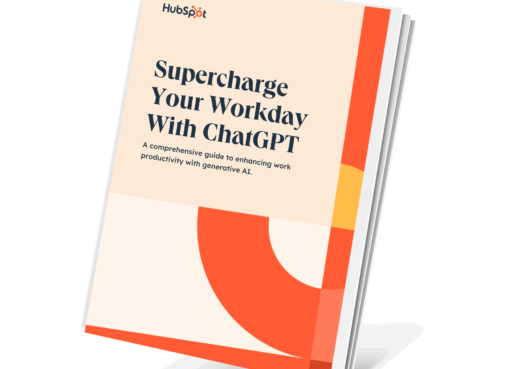If you’ve been following the AI space lately, it’s easy to feel like you’re drowning in acronyms and version numbers.
![Download Now: The Annual State of Artificial Intelligence in 2025 [Free Report]](https://no-cache.hubspot.com/cta/default/53/b72f2b25-8cc9-4642-9a1b-1e675d3d273b.png)
OpenAI has been on a roll with new model releases, updates, and features that are reshaping how we interact with AI. From powerful reasoning models like o3 and 04-mini to the mind-blowing potential of ChatGPT Memory, OpenAI is beating even their own performance predictions.
In this deep dive, I’ll share the latest updates and explain what they mean for creators, developers, and everyday users. Then, I’ll share my thoughts on where OpenAI is headed next, including rumors about an upcoming social media platform.
Why OpenAI Should Be Banned From Naming Things
Let me start by saying this: OpenAI needs a naming consultant. Seriously. Between GPT-4.5, GPT-4.1, o3, 04-mini, and whatever else they’ve got cooking, the naming conventions have become a total mess.
The version numbers don’t follow traditional chronology, which is frustrating for users trying to understand which model is newer and better. OpenAI has acknowledged the problem and plans to unify its interface in the future, where a single model (likely GPT-5) will route requests to the most appropriate backend.
Until then, we’re navigating a complex maze of version numbers and acronyms.
OpenAI Model Breakdown
Below is an overview of the current major models from OpenAI, including their strengths, weaknesses, and performance characteristics. I’ve also highlighted which models are being phased out and which ones are new or coming soon.
|
Model |
Strengths |
Weaknesses |
Status |
Speed (Latency) |
|
GPT-3.5 |
Fast and efficient for basic conversations and simple tasks |
Lower reasoning ability, outdated knowledge base |
Available |
Fast |
|
GPT-4 |
Balanced performance, suitable for general use |
Less specialized than newer variants |
Available |
Moderate |
|
o1 |
First true reasoning model, excels at complex logic and science |
Slower response time, limited availability |
Available |
Slower |
|
GPT-4.1 Series |
Improved coding performance, faster inference |
Not available in ChatGPT yet (API only) |
New |
Fast (Nano), Moderate (Mini), Slower (Full) |
|
o3 |
Most powerful model currently available, excels at math and reasoning |
High cost, resource-intensive |
New |
Slower |
|
04-mini |
Efficient reasoning model, strong in STEM benchmarks |
Less creative, less suitable for casual chats |
New |
Moderate |
|
(Phased out) GPT-4.5 Orion |
Strong writing capabilities, more human-like tone |
Higher cost, not ideal for logic or coding |
Phased out April 30, 2025 |
Moderate |
Best for Scientific and Mathematical Reasoning: o3
OpenAI’s o3 model is a powerhouse for deep scientific and mathematical reasoning, especially when paired with external tools. o3 with Python scored 99.5% on competition math in a test — it’s basically acing it.
It also outperforms other models in graduate-level science questions and complex logical reasoning. When you think about models that could deliver scientific discoveries in the not-too-distant future, this is it.
Best for Coding: GPT-4.1 Full and o3
For coding, there are a few different options that perform well. GPT-4.1 Full was explicitly designed for coding and following instructions, showing strong performance in coding benchmarks. GPT4.1 is actually a smarter model than GPT4.5. So even though the numbering scheme went backwards, it’s a more powerful model than 4.5 was.
For a while, o1 was OpenAI’s top dog model, the best of the best, but now that’s been dethroned by o3. o3 is excellent for complex logic and reasoning tasks, making it ideal for debugging and solving advanced programming problems.
Best for Writing, Creativity, and General Use: GPT-4
GPT-4 is OpenAI’s default model within ChatGPT, so if you’ve just dabbled with the free version, that’s likely what you used. GPT-4.5 was my go-to for creativity and was the best OpenAI model I’ve seen for human-like writing, but unfortunately, that’s no longer available.
That power should translate into GPT-5, but until that’s available, GPT-4 is the next best for writing, creativity, and general use.
Best Value: GPT-4.1 Nano
GPT-4.1 Nano is a small, fast model with surprisingly good performance. That’s ideal for quick tasks where high-end power isn’t needed. It boasts a one-million token context window. If you want access to the superpower of 4.0 but don’t want to spring $200 a month or more for Pro, try Nano.
How OpenAI’s Models Compare to Outside Models
OpenAI no longer releases its performance data side-by-side with competitors, but it’s worth examining. For example, Google’s Gemini 2.5 Pro recently made headlines for its impressive coding capabilities, surpassing expectations. Google has quietly taken the lead in AI coding in 2025, and people haven’t been talking about it enough.
Claude 3.7 from Anthropic also shows promise but has struggled with consistency compared to earlier versions. OpenAI’s o3 model outperforms Claude 3.7 in math and reasoning benchmarks.
While OpenAI leads in some areas, such as multimodal understanding and reasoning, the gap between top-tier models is narrowing. Developers should evaluate models based on specific use cases rather than by company alone.
New Feature: ChatGPT Memory
One of the most impactful updates from OpenAI this year is ChatGPT Memory, which lets the model retain context across sessions. This means that interactions build over time, creating a more personalized experience.
I tested this by asking ChatGPT to describe me based on our chats, and the results were kind of shocking. It understood things about me that I didn’t explicitly tell it.
This means AI is getting closer to understanding people and their preferences holistically. That leads to highly personalized support and recommendations without being explicitly asked.
Coming soon? OpenAI social media network to rival X
Memory is a core feature of understanding who people actually are. With those capacities, ChatGPT could be poised to create the first AI-native social network. Rumors are that ChatGPT will apply its digital memory capabilities to a new arena: Social media (specifically, an X-like platform).
Unlike traditional platforms driven by engagement algorithms, OpenAI’s approach could leverage AI to curate meaningful content, filter noise, and surface insights aligned with individual interests. Personalization would be central, with the potential for AI-driven curation and real-time analysis of user behavior.
While no official details have been released, I personally would be very excited to see this and try it out.

How to Stay on Top of the AI Model Firehose
OpenAI’s recent updates reflect a broader trend: AI systems are becoming smarter, faster, and more integrated into everyday workflows. With the release of o3, 04-mini, and the rollout of ChatGPT Memory, we’re seeing a shift from reactive tools to proactive, adaptive companions.
Companies that are slow or resistant to adopting AI will find themselves falling behind. Don’t let model confusion place you in paralysis. Instead, test fast and often, and reorganize around speed and flexibility to build AI into your workflows.
To learn more about ChatGPT’s models, check out the full episode of The Next Wave below:






![The State of Generative AI & How It Will Revolutionize Marketing [New Data + Expert Insights] the-state-of-generative-ai-&-how-it-will-revolutionize-marketing-[new-data-+-expert-insights]](https://blog.contentkrush.com/wp-content/uploads/2024/09/140167-the-state-of-generative-ai-how-it-will-revolutionize-marketing-new-data-expert-insights-510x369.png)

![AI email subject lines that drive 3x more revenue and actually convert [+ exclusive insights] ai-email-subject-lines-that-drive-3x-more-revenue-and-actually-convert-[+-exclusive-insights]](https://blog.contentkrush.com/wp-content/uploads/2025/10/142234-ai-email-subject-lines-that-drive-3x-more-revenue-and-actually-convert-exclusive-insights-510x369.png)

![New Marketing Jobs That Focus on AI [Data + Examples] new-marketing-jobs-that-focus-on-ai-[data-+-examples]](https://blog.contentkrush.com/wp-content/uploads/2024/09/140151-new-marketing-jobs-that-focus-on-ai-data-examples-510x369.webp)
![What Jobs Will AI Replace & Which Are Safe in 2024 [+ Data] what-jobs-will-ai-replace-&-which-are-safe-in-2024-[+-data]](https://blog.contentkrush.com/wp-content/uploads/2024/08/140115-what-jobs-will-ai-replace-which-are-safe-in-2024-data-510x369.webp)
![14 best AI SEO tools & how I use them [new data] 14-best-ai-seo-tools-&-how-i-use-them-[new-data]](https://blog.contentkrush.com/wp-content/uploads/2025/07/141833-14-best-ai-seo-tools-how-i-use-them-new-data-510x369.png)

![I tested the top 14 AI chatbots for marketers [data, prompts, use cases] i-tested-the-top-14-ai-chatbots-for-marketers-[data,-prompts,-use-cases]](https://blog.contentkrush.com/wp-content/uploads/2025/08/142026-i-tested-the-top-14-ai-chatbots-for-marketers-data-prompts-use-cases-510x369.webp)




![AI marketing campaigns only a bot could launch & which tools pitch the best ones [product test] ai-marketing-campaigns-only-a-bot-could-launch-&-which-tools-pitch-the-best-ones-[product-test]](https://blog.contentkrush.com/wp-content/uploads/2025/06/141665-ai-marketing-campaigns-only-a-bot-could-launch-which-tools-pitch-the-best-ones-product-test-510x369.webp)



![Is it Real or AI? Test Your Detection Skills [Round 4] is-it-real-or-ai?-test-your-detection-skills-[round-4]](https://blog.contentkrush.com/wp-content/uploads/2025/02/140897-is-it-real-or-ai-test-your-detection-skills-round-4-510x369.jpg)










Comment here